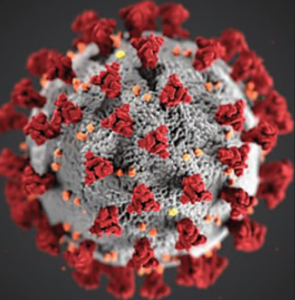 What Your Brain Does to Try to Keep You Safe—and When You Need to Redirect It
What Your Brain Does to Try to Keep You Safe—and When You Need to Redirect It
My friend is an outgoing, funny and wise small business owner.
She also is in the high risk group for COVID-19 and hasn’t left her home for almost two months. The only exception is occasional walks around her neighborhood, wearing her mask. She gets her groceries delivered, and stays in touch with family and friends through calls and Zoom.
“I’m sure if I got the coronavirus, it would be the end of me,” she said. “I wanted to go for a walk with you today. But I got such a feeling of anxiety when laying out my clothes that I knew I couldn’t do it. Am I overreacting?”
#1: Understanding “Fear Itself”
This is how fear looks in our brains.
We actually have three:
- Survival brain, whose job is to keep us alive. We have three choices here: fight, flight or freeze.
- Emotional brain, which houses “mad, sad, glad, hurt and afraid” and all the permutations in-between. It also is where we make decisions
- Thinking brain, which is responsible for all of our higher reasoning and planning powers.
The survival brain includes the amygdala. It’s job—on a subconscious level—is to scan the horizon, looking for physical and verbal risks and threats, and get us out of the way.
When you’re terrified, your body shuts down impulses from the thinking and emotional brains to the amygdala. This is called “amygdala hijack.”
You lose your emotional intelligence. Stress hormones (epinephrine and cortisol) flood your system. Epinephrine raises your heart rate, so your body can move more blood to the large muscle groups that may need it for fight or flight. It also dilates your pupils, which lets more light into your eyes so you can see better.
Cortisol puts a damper on your immune system, reducing any inflammation if you’re wounded. It also gets your brain stem to stimulate your amygdala even more—which, in turn, produces more cortisol.
Now there’s enough cortisol in your system to suppress your hippocampus, which usually puts the brakes on your amygdala. Not surprisingly, your ability to make logical choices drops drastically, and your working memory falters.
In other words, you’re now operating on one third of your brain (survival). You don’t know how you feel and can’t make decisions or plans.
#2: Knowing Your Brain Can’t Tell What’s Real
It’s true: your brain has the same response to a perceived or imagined threat as it does to a real one.
That’s why a lot of us jump or scream when the madman leaps out in a horror movie. Or we’re on a deserted city sidewalk at night, start thinking about those scary movies or homicide shows, and pick up the pace because now we’re fearful.
It doesn’t help that moods are contagious. If someone else is afraid, you’re likely to “catch” their fear. Even when it’s clear that what’s causing this will never happen to us. (But our thinking brain is shut down, so we can’t come up with that idea.)
#3: Calming Your Brain
We all have moments when that black hole of fear opens before us. Now that you know how your brain operates, here are three questions you can ask to bring it back from the brink.
“What am I feeling?” The simple act of identifying an emotion reduces the activity in your amygdala.
Research shows ignoring or suppressing feelings doesn’t change the level of emotional response you’re having. Dr. Daniel Siegel, a psychology professor at UCLA, came up with this line, “Name it to tame it.” Consciously recognizing an emotion reduces its impact on you—in part by jumpstarting your emotional brain.
“What can I decide?” Making a decision reengages your thinking brain. It creates intentions and goals. Finding solutions gives you a sense of control and helps to soothe your emotional brain. And it doesn’t have to be the best possible decision: good enough is really good enough. Because trying to be perfect will only take you back into that fear of making a misstep.
It could be that you decide this is not a real threat, and all you have to do is breathe and let it go.
“What am I grateful for?” This boosts two neurotransmitters in your brain—dopamine and serotonin—that are natural antidepressants. They also decrease the activity in your amygdala. And you don’t even need to find a single thing you’re grateful for. Just the action of searching for something works.
Fear and COVID-19
Yes: It’s wise to be careful when there’s a pandemic that spreads through the air and can be contracted from people who don’t know they have it.
My friend knew she was afraid. And, for now, she decided to stay inside. She was grateful that I understood. We’ll try again next week.
